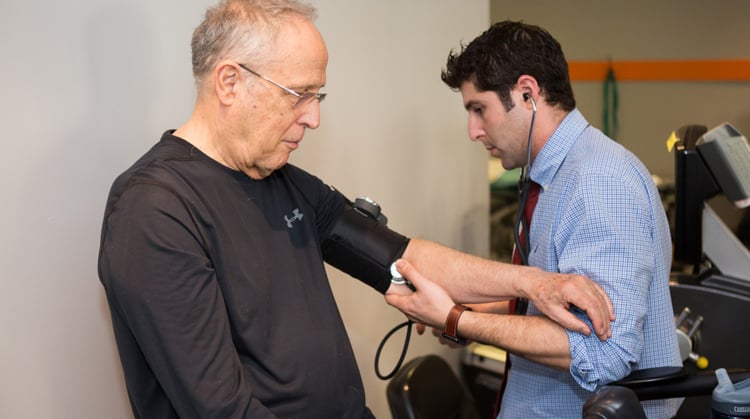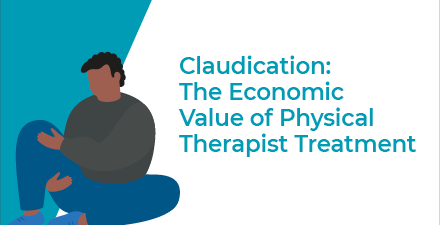Physical Therapy Guide to Heart Disease and Heart Failure
Heart disease and heart failure are systemic cardiovascular diseases. They can affect exercise tolerance, endurance, and quality of life. Heart diseases make it difficult for a person’s heart to keep up with their body’s daily demands.
Heart disease is widespread. It resulted in 859,125 deaths in the United States in 2017, according to the American Heart Association. It also is the leading cause of death globally, with 17.8 million related deaths in 2017. This number is expected to grow to more than 2.2 million by 2030. Heart disease is the world’s leading cause of death each year, taking more lives than cancer and lung diseases combined.
Heart failure affects an estimated 6.2 million Americans older than age 20. This number is expected to increase to affect greater than 8 million adults by the year 2030.
If you have heart disease or heart failure, a physical therapist can work with you to help keep it from getting worse. Physical therapists also can help people reduce their risk for developing heart disease. Working with a physical therapist can improve your:
- Exercise capacity.
- Strength and endurance.
- Overall health and well-being.
Physical therapists are movement experts. They improve quality of life through hands-on care, patient education, and prescribed movement. You can contact a physical therapist directly for an evaluation. To find a physical therapist in your area, visit Find a PT.
What Are Heart Disease and Heart Failure?
Heart disease, also known as cardiovascular disease, is any disease that involves the blood vessels in the heart, limbs, or brain. The term covers:
- High blood pressure.
- Heart attack.
- Heart failure.
- Heart valve problems.
- Peripheral artery disease.
- Stroke.
The primary risk factors for developing heart disease include:
- High blood pressure (hypertension).
- Disease of the coronary arteries (atherosclerosis).
- A history of prior heart attack (myocardial infarction).
- A family history of heart disease.
- Cigarette smoking.
- Physical inactivity.
- Increased body mass index/overweight.
- High cholesterol.
- Diabetes (increased blood sugar levels).
- Age over 45 for men; over 55 for women.
Heart failure is a syndrome that occurs when the heart fails to meet the needs of the body. This means the heart is not functioning as it should. It occurs when the heart is unable to fill with, or pump, blood effectively. As a result, the body does not get the blood and oxygen it needs.
Primary risk factors for developing heart failure include:
- Coronary artery disease due to a buildup of plaque in the arteries of the heart.
- Heart defects inherited or present at birth.
- High blood pressure.
- Smoking.
- Heart valve disease.
- Infection of the heart.
- Obesity increased body mass index.
- Diabetes.
- Certain types of chemotherapy.
- Alcohol and/or drug abuse.
Signs and Symptoms
People with heart disease may not even know they have it. The disease is sometimes "silent." It may not get diagnosed until a person:
- Has a heart attack.
- Experiences heart failure.
- Notices, or a health care provider detects, an abnormal heart rhythm.
A heart attack occurs when the flow of blood to a section of the heart is blocked. This is most often due to coronary artery disease, when plaque builds up on the artery wall. If the blood flow is not restored, that section of the heart can begin to die. Signs and symptoms of a heart attack may include:
- Chest pain or discomfort.
- Pain into the arms, shoulders, neck, jaw, or abdomen.
- Shortness of breath.
- Fatigue.
- Nausea.
- Dizziness.
- Racing heart (palpitations).
If you think you may be having a heart attack, CALL 9-1-1 for emergency medical care.
If you have heart failure, your body may compensate to provide enough blood and oxygen for your vital organs. This can result in increased symptoms over time and worsening disease.
Heart failure symptoms may include the following:
- Fatigue.
- Shortness of breath.
- Lower extremity swelling (edema).
- Pulmonary congestion (fluid in your lungs).
- Decreased exercise tolerance.
- Weight gain due to increased fluid.
How Is It Diagnosed?
A doctor will diagnose your heart disease or heart failure. Your doctor will perform an echocardiogram and a stress test to assess how well your heart is pumping. A physical therapist can evaluate the symptoms of heart disease and heart failure and how they change over time. Your physical therapist can assess how these symptoms affect you and your activity tolerance.
Your physical therapist will perform a thorough evaluation to include:
- Going over your medical history, prior level of function, medicines, and current symptoms.
- Reviewing the tests performed by your doctor with their results.
- A strength and balance assessment.
- Tests to assess your cardiovascular endurance.
- Assessment of physical activity.
How Can a Physical Therapist Help?
Physical therapists design personalized treatment plans for each person's needs, challenges, and goals. They help you:
- Improve your mobility.
- Manage pain and other chronic conditions.
- Recover from or prevent injury and chronic disease.

Your physical therapist will work with you and other members of your health care team to address problems caused by heart disease or heart failure.
Your physical therapy treatment plan will include a personalized exercise program and prescribed movement. This program will help you decrease the signs and symptoms of heart disease and/or failure. It also will improve your ability to take part in home, work, and other activities. Research shows that physical activity and exercise can improve exercise capacity. Physical activity and exercise also can help people with heart failure live longer than they would otherwise.
Your treatment plan may include:
Education. Your physical therapist will educate you on physical activity and exercise that is safe for you to do. They also will design a personalized exercise program and teach you how to increase your exercise capacity. Education may include recommendations for lifestyle changes and self-management behaviors. They also may teach you about any signs and symptoms to watch out for. Your physical therapist may refer you to other health care providers as needed.
Aerobic endurance. Patients with heart disease or heart failure are at risk for decreased exercise tolerance and endurance. Your physical therapist will help you increase your aerobic endurance through monitored exercise. They also will develop a home exercise program based on your needs and goals. Research shows that an aerobic exercise program:
- Improves quality of life.
- Helps to decrease hospital admissions.
- Improves time on walk tests.
- Decreases the risk of severe disease leading to death.
Aerobic exercise can be achieved in many forms, including:
- Walking.
- Cycling.
- Treadmill walking.
- Dancing.
Muscle strengthening. Strength training is important to overall health. Maintaining muscle strength will help you perform functional activities and maintain or improve your overall strength. Research shows that exercise is safe and effective for most patients with heart disease.
Your physical therapist will work with you to determine the appropriate amount and intensity of your exercise training. They will design a safe, personalized program based on your unique needs and goals.
Improving your ability to breathe during activity. Research shows that increasing the strength of the muscles that aid breathing can improve exercise tolerance in people with heart failure. Your physical therapist will assess your muscles and ability to breath during physical activity and design an exercise program for your condition.
Can This Injury or Condition Be Prevented?
The best way to prevent heart disease and heart failure is to maintain a healthy lifestyle and decrease your risk factors. It is important to be physically active, exercise, and choose healthy habits. Regular physical activity and exercise can:
- Decrease blood pressure and cholesterol levels.
- Reduce your risk of an initial cardiac event (a heart attack).
- Benefit your physical, mental, and social health.
- Help to improve other chronic conditions, such as diabetes, obesity, depression, and some cancers.
Increased muscle strength also can lower your risk of having a heart attack and improves your ability to do everyday activities.
The American Heart Association and the U.S. Department of Health and Human Services recommend that for substantial health benefits, adults ages 18 to 64, with and without chronic health conditions, should do at least one of the following:
- 150 minutes a week of moderate-intensity exercise (such as brisk walking).
- 75 minutes a week of vigorous-intensity exercise (such as running or jogging).
You also can decrease your risk of developing heart disease by reducing other risk factors with the following:
- Choose a healthy diet full of fruits, vegetables, fish, and fiber-rich whole grains. The American Heart Association’s guide, How to Help Prevent Heart Disease At Any Age, provides additional information.
- Stop smoking.
- Maintain your weight at a healthy level.
- Manage diabetes so that blood sugars remain stable.
If you have heart disease or heart failure, your physical therapist can guide you to decrease your risk factors and slow the progression of the disease.
Cardiac rehabilitation (cardiac rehab) is a program designed for patients who are recovering from a heart attack, heart disease, heart failure, and heart surgery. It delivers a personalized exercise program, recommendations for lifestyle changes, and patient education. The goal of cardiac rehab is to decrease cardiovascular risk factors and improve healthy behaviors to lower your risk for future cardiovascular events.
Participating in an outpatient cardiac rehab program has been shown to:
- Decrease cardiovascular risk factors.
- Reduce disability.
- Promote healthy lifestyle habits, including increased physical activity.
What Kind of Physical Therapist Do I Need?
All physical therapists are prepared through education and experience to help you manage cardiovascular disease. You may want to consider:
- A physical therapist who is experienced in treating patients who have suffered from a heart attack or who are diagnosed with heart disease or heart failure.
- A physical therapist who is a board-certified cardiovascular and pulmonary clinical specialist or who completed a residency in cardiovascular and pulmonary physical therapy. This physical therapist will have advanced knowledge, experience, and skills that may apply to your condition.
You can find physical therapists who have these and other credentials by using Find a PT, the online tool built by the American Physical Therapy Association, to search for physical therapists with specific clinical expertise in your area.
General tips when you are looking for a physical therapist (or any other health care provider):
- Get recommendations from family, friends, or other health care providers.
- When you contact a physical therapy clinic for an appointment, ask about the physical therapist’s experience in helping people with heart disease or heart failure.
- Be prepared to describe your symptoms in as much detail as possible, and say what makes your symptoms worse.
The American Physical Therapy Association believes that consumers should have access to information to help them make informed health care decisions and prepare them for their visit with a health care provider.
The following resources offer some of the best scientific evidence related to physical therapy treatment for heart failure and heart disease. They report recent research and give an overview of the standards of practice both in the United States and internationally. They link to a PubMed* abstract which may also offer free access to the full text, or to other resources. You can read them or print out a copy to bring with you to your health care provider.
Liguori G. ACSM's Guidelines for Exercise Testing and Prescription. 11th ed. Philadelphia, PA: Wolters Kluwer; 2021.
Shoemaker MJ, Dias KJ, Lefebvre KM, Heick JD, Collins SM. Physical therapist clinical practice guideline for the management of individuals with heart failure. Phys Ther. 2020;100(1):14–43. Article Summary in PubMed.
American Heart Association. What is Cardiovascular Disease? www.heart.org. https://www.heart.org/en/health-topics/consumer-healthcare/what-is-cardiovascular-disease. Accessed December 2, 2020.
National Heart Lung and Blood Institute. Heart attack. https://www.nhlbi.nih.gov/health-topics/heart-attack. Accessed December 2, 2020.
Benjamin EJ, Blaha MJ, Chiuve SE, et al. Heart disease and stroke statistics — 2017 update: a report from the American Heart Association [correction in: Circulation. 2017;136(10):e196]. Circulation. 2017;135(10):e146–e603. Article Summary in PubMed.
American Heart Association. How to Help Prevent Heart Disease At Any Age. Reviewed April 1, 2015. Accessed December 2, 2020.
Gupta A, Ghimire G, Hage FG. Guidelines in review: 2013 ACCF/AHA Guideline for the Management of Heart Failure. J Nucl Cardiol. 2014;21(2):397–399. Article Summary in PubMed.
Revised:
Feb 7, 2021
Content Type: Guide
Heart Disease and Heart Failure
PT, DPT, board-certified clinical specialist in cardiovascular and pulmonary physical therapy, on behalf of the APTA Academy of Cardiovascular & Pulmonary Physical Therapy
You Might Also Like...
Article
What Is Cardiovascular and Pulmonary Physical Therapy?Feb 13, 2024
Learn about treatment by a physical therapist who focuses on or specializes in cardiovascular and pulmonary physical therapy.
Did You Know?
Care Plus Physical Therapy for Claudication Outperforms Typical Care AloneSep 19, 2023
Patients and referring providers have another reason to choose or recommend physical therapy to claudication according to a report by the American Physical
Health Tips
Living With Heart Failure? 5 Ways To Improve Quality of LifeJul 6, 2021
Heart failure is a common cause of heart disease. Symptoms can include feeling breathless, weight gain, fatigue, and a decreased ability to tolerate exercise.


